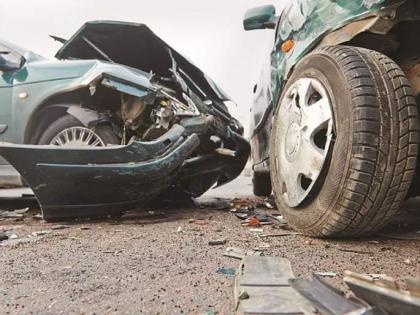Mumbai Sees Highest Drop in Road Accident Fatalities in 2023
By Snehal Mutha | Published: January 16, 2024 07:25 PM2024-01-16T19:25:49+5:302024-01-16T19:27:00+5:30
Maharashtra witnessed a 1.4% decline in overall road fatalities in 2023, with a 24% drop in Mumbai and encouraging ...

Mumbai Sees Highest Drop in Road Accident Fatalities in 2023
Maharashtra witnessed a 1.4% decline in overall road fatalities in 2023, with a 24% drop in Mumbai and encouraging declines in Chandrapur (20%) and Navi Mumbai (18%). While the total number of accidents edged up slightly from 33,383 to 34,114, the decline in deaths marks a positive shift after a 12.5% increase in 2022.
Authorities attribute the decline in Mumbai to stricter enforcement of helmet use, traffic speed limits, seat belt regulations, and Driving under the influence (DUI) crackdowns. However, the Maharashtra traffic police's road crash report points to driver behaviour as a major cause of accidents, including speeding, drunk driving, and lack of safety measures.
Public Works Department Minister Dadaji Bhuse, who launched the Road Safety Mission on Monday, emphasised the need for further reductions. He said, "Maharashtra saw a drop in fatalities from 15,224 in 2022 to 15,009 in 2023, a decline of 1.4%. However, stricter enforcement could help us reduce fatalities by 10%." Bhuse urged authorities to prioritise lane discipline, ensuring heavy vehicles stay off the rightmost lanes and drivers follow markings.
Transport officials credit awareness campaigns, infrastructure improvements, and enforcement drives for the decline. Inter-agency cooperation and age-specific awareness programs for young drivers have also contributed.
Deputy Regional Transport Officer Vinay Ahire said, "These measures have a psychological ripple effect, encouraging safer driving habits." He highlighted the role of advanced technology, particularly interceptor vehicles equipped with ANPR cameras, speed guns, and breathalysers, in detecting violations and deterring risky behaviour.
Ahire also mentioned the importance of addressing black spots, areas with a high frequency of accidents. He cited the example of Mankhurd Jakat Naka, where infrastructure changes were implemented alongside identifying high-risk vehicles to address pedestrian and two-wheeler fatalities.
Open in app